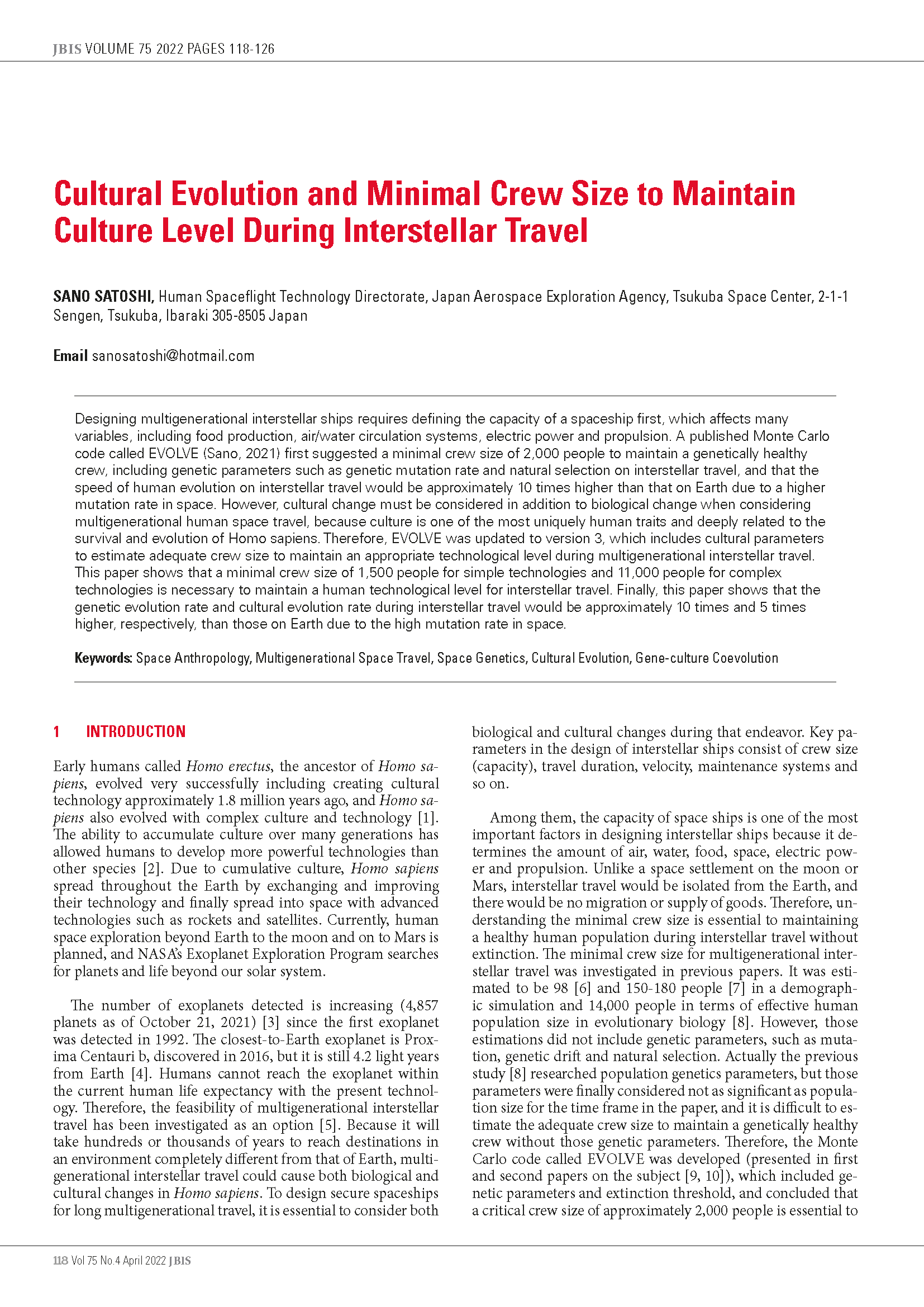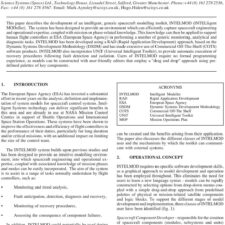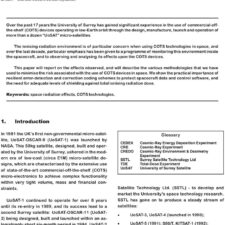Cultural Evolution and Minimal Crew Size to Maintain Culture Level During Interstellar Travel
£5.00
Sano Satoshi (2022), JBIS, 75, pp.118-126
Refcode: 2022.75.118
DOI: n/a
Abstract:
Designing multigenerational interstellar ships requires defining the capacity of a spaceship first, which affects many variables, including food production, air/water circulation systems, electric power and propulsion. A published Monte Carlo code called EVOLVE (Sano, 2021) first suggested a minimal crew size of 2,000 people to maintain a genetically healthy crew, including genetic parameters such as genetic mutation rate and natural selection on interstellar travel, and that the speed of human evolution on interstellar travel would be approximately 10 times higher than that on Earth due to a higher mutation rate in space. However, cultural change must be considered in addition to biological change when considering multigenerational human space travel, because culture is one of the most uniquely human traits and deeply related to the survival and evolution of Homo sapiens. Therefore, EVOLVE was updated to version 3, which includes cultural parameters to estimate adequate crew size to maintain an appropriate technological level during multigenerational interstellar travel. This paper shows that a minimal crew size of 1,500 people for simple technologies and 11,000 people for complex technologies is necessary to maintain a human technological level for interstellar travel. Finally, this paper shows that the genetic evolution rate and cultural evolution rate during interstellar travel would be approximately 10 times and 5 times higher, respectively, than those on Earth due to the high mutation rate in space.
Keywords: Space Anthropology, Multigenerational Space Travel, Space Genetics, Cultural Evolution, Gene-culture Coevolution





